We can study animals from all over the world thanks to science, but what about those that no longer exist? The list of extinct mammals could go on for ages, but each animal has a unique story. With today’s advanced research, we can learn so much from animals that haven’t even existed during our lifetimes!
Join us as we go through 10 extinct mammals that will leave you utterly amazed.
1. Thylacosmilus
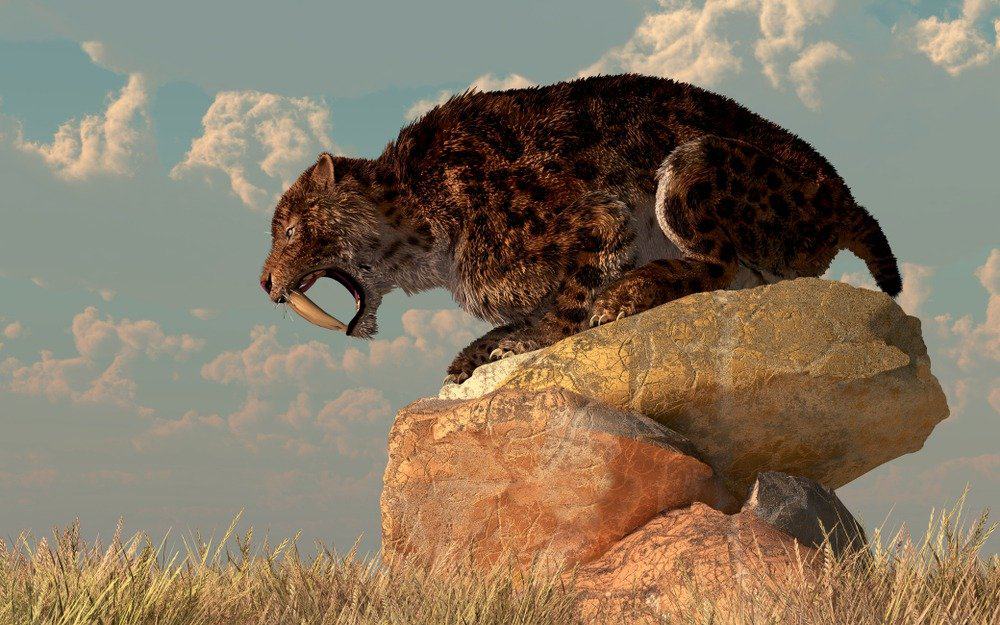
Daniel Eskridge/Shutterstock.com
Often referred to as the “saber-toothed tiger,” this mammal is closely related to marsupials. This incredible extinct predatory animal can be most recognized by its two long, razor-sharp canine teeth. These teeth could grow longer than 7 inches and were carefully crafted to cut through tissue, allowing them to inflict the greatest damage on their prey. Not only did they have outstandingly long teeth, but an amazing jaw that could open over 90 degrees. The thylacosmilus was one magnificent animal that, unfortunately, was classified as an extinct mammal.
2. Eobasileus

Charles R. Knight (1874–1953) / public domain – License
Although it looked like a rhinoceros, the Eobasileus was a mammal species belonging to the order Dinocerata. This incredibly large beast was 13 feet long and weighed over 8,000 pounds. This creature had 3 pairs of horns atop its skull, similar to that of a giraffe. Eobasileus had an incredible pair of strong large tusks on its jaw and lived 45 million years ago.
3. Quagga
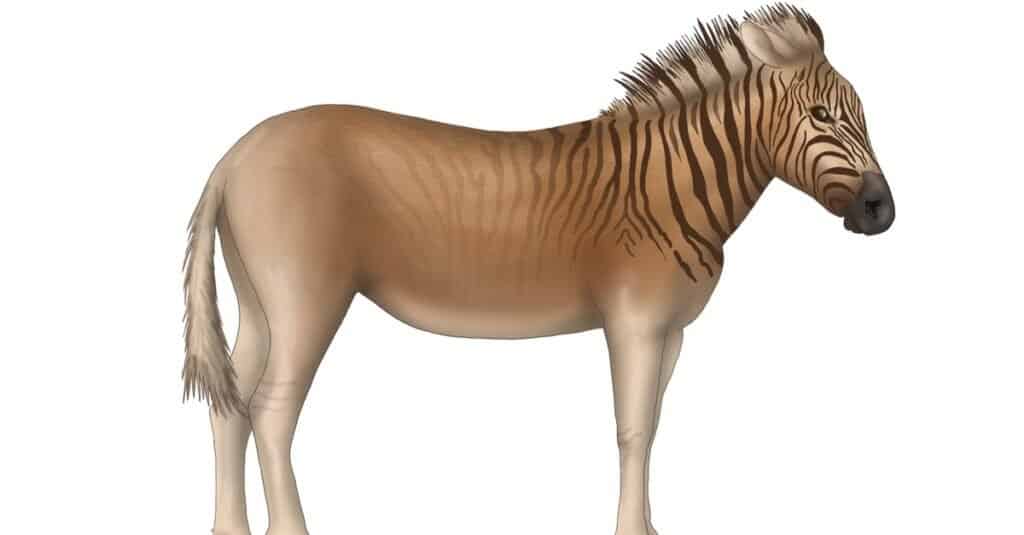
miha de/Shutterstock.com
Quagga is an extinct mammal subspecies of zebra that were incredibly unique in its own way. The quagga was said to look like a mixture of a zebra and a horse. This is because the rear part of its body was all brown, and the front contained a variety of stripes. Each quagga had its own set of individual stripes. The last living quagga resided in the London Zoo throughout the late 1800s.
Additionally, this quagga was the only one ever to be photographed. The quagga had incredibly long legs made for endurance and speed, which allowed them to reach over 40 mph. They would also use these incredibly strong legs for defense and give an extremely hard kick if provoked.
4. Thylacine

Adwo/Shutterstock.com
The Thylacine, also known as the Tasmanian Tiger, wasn’t much of a tiger at all. This marsupial mammal was said to resemble more of a medium-sized dog than it did a tiger. These incredible animals weighed anywhere from 30 to 60 pounds and had striking yellowy brown fur. Thylacines were timid animals that communicated mainly through yaps and barks like dogs. Sadly their extinction was caused at the hands of humans through excessive hunting of the animal. The last Thylacine of its species sadly passed away in 1936 at the Beaumaris Zoo, where it was held in captivity.
5. Irish elk

Daniel Eskridge/Shutterstock.com
A funny fact is that the Irish elk was not actually an elk but the largest deer species ever known. These gigantic mammals were 7 feet tall and had massive antlers atop their head that spanned 12 feet. Just the antlers on their own weighed 90 pounds! These incredible beasts were said to have been roaming the earth about 8,000 years ago before becoming extinct. Although scientists don’t know exactly why the Irish elk went extinct, there are a few theories. Some believe its size alone was the reason that contributed to its extinction, while other theories suggest a food shortage might have caused them not to be able to fulfill their dietary needs.
6. Pyrenean Ibex
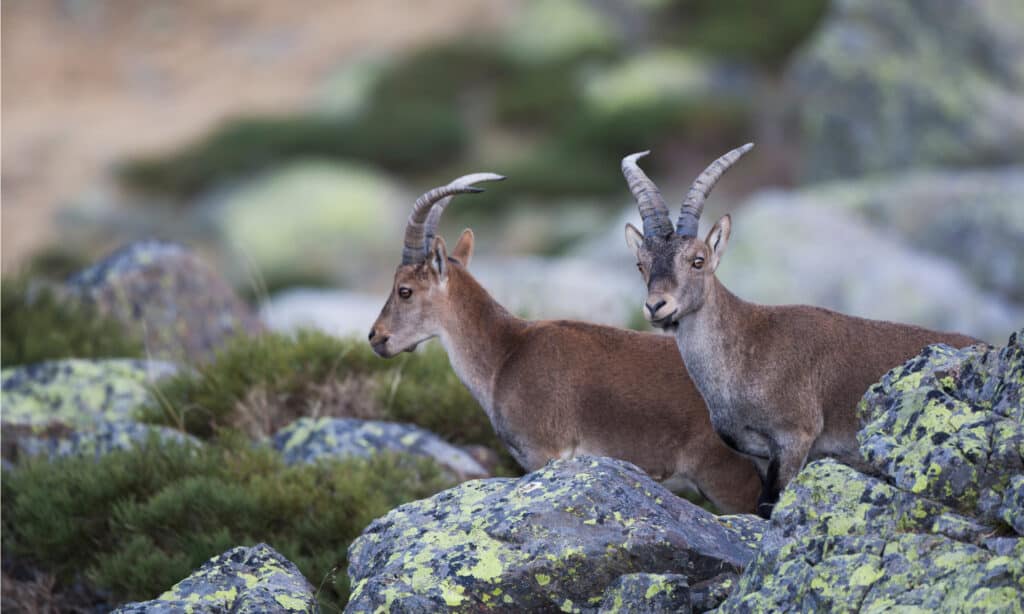
Alexandre Boudet/Shutterstock.com
The Pyrenean Ibex was a species of goat that became extinct in the 2,000s. These extinct mammals could be found living throughout the Pyrenees Mountains along Spain and France and mountains throughout Asia and Africa. They chose to live on cliffs to protect themselves from predators. Scientists aren’t entirely sure what caused the Pyrenean Ibex to become extinct, but many believe it could’ve been due to hunting and diseases. Interestingly, scientists tried to clone the Pyrenean Ibex back into existence, but sadly the baby died due to health problems shortly after birth.
7. Steller’s Sea Cow
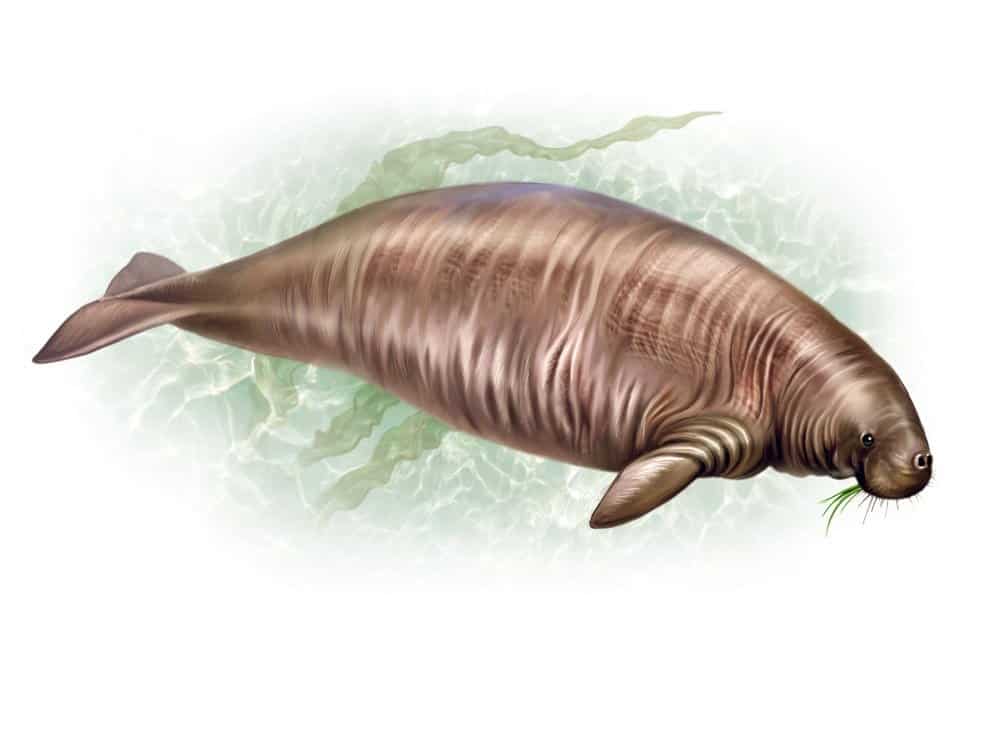
Liliya Butenko/Shutterstock.com
Steller’s Sea Cows were larger than manatees, one of the largest members of the sea cow family. These incredible aquatic animals could grow to up to lengths of 25 feet and weigh over 8,000 pounds. They were called sea cows because they lived in herds and fed on seagrass near the water’s surface. Sadly this amazing creature became classified as an extinct mammal due to rapid hunting by humans. Sailors and fur traders would hunt them for their fat and meat, and since these sea cows weren’t fast swimmers, this made them an easy target.
8. Bali Tiger
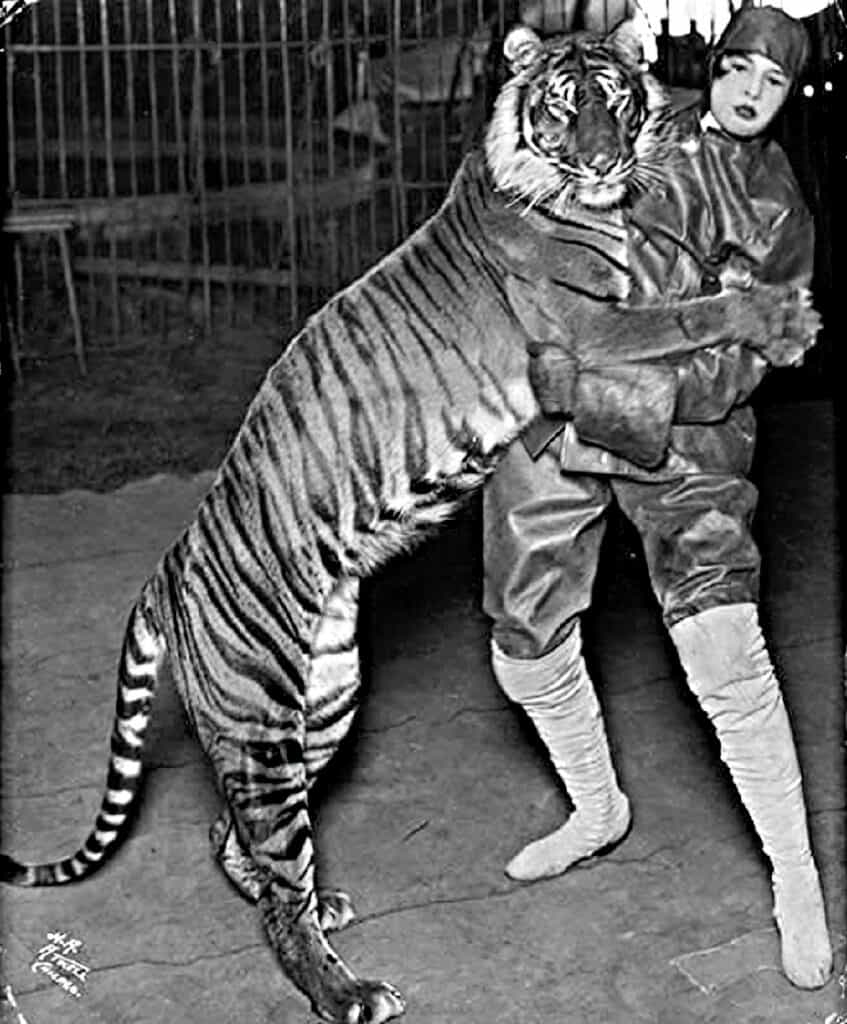
Hary Atwell / Creative Commons – License
The Bali Tiger is a big cat species that lived on the Indonesian island of Bali before its extinction. This incredible tiger was around 7 feet long and weighed over 200 pounds. Various prey was consumed by these carnivorous mammals, including monkeys and wild boars. They had a beautiful orange fur coat with an array of dark and white stripes throughout their body. The Bali Tiger became extinct in the 1950s due to hunting and destroying their habitats, making it much harder for them to find prey.
9. Woolly Mammoth

Dotted Yeti/Shutterstock.com
One of the most well-known extinct animals is the woolly mammoth. Woolly mammoths are close relatives of modern elephants and were incredible creatures. Unlike elephants today, woolly mammoths had thick brown fur that covered their entire bodies, and this was due to the extremely cold temperatures they lived in. Woolly mammoths became extinct over 10,000 years ago due to climate change, but there are theories to suggest humans may also have been a part of the reason.
10. Camelops
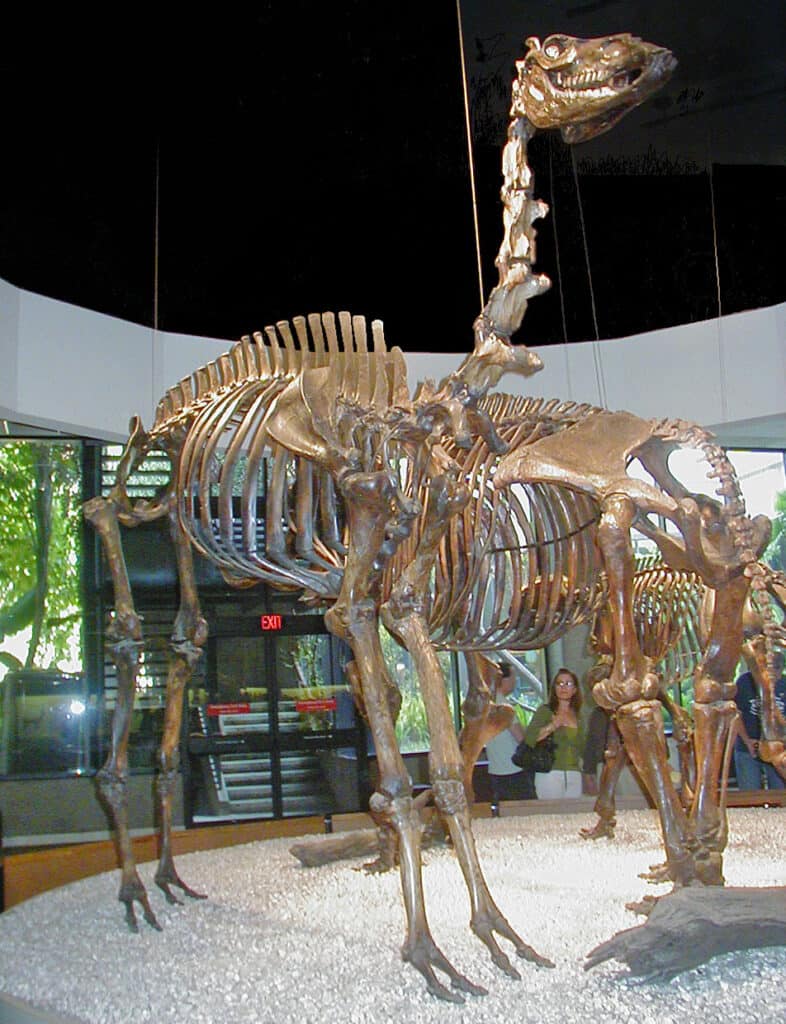
WolfmanSF / CC BY-SA 3.0 – License
A camelop is an extinct mammal of the subfamily of camels that roamed North America over 11,000 years ago. These incredibly large animals reached heights of 7 feet and weighed almost 2,000 pounds. According to some scientists, camelops are more closely related to llamas than to camels. As they roamed, they grazed on plants and shrubs. Climate change and the arrival of humans and hunting are believed to be why the camelops are now extinct.
The post 10 Extinct Mammals (With Photos) appeared first on AZ Animals.
from Animal News, Facts, Rankings, and More! - AZ Animals https://ift.tt/0AfUOB6